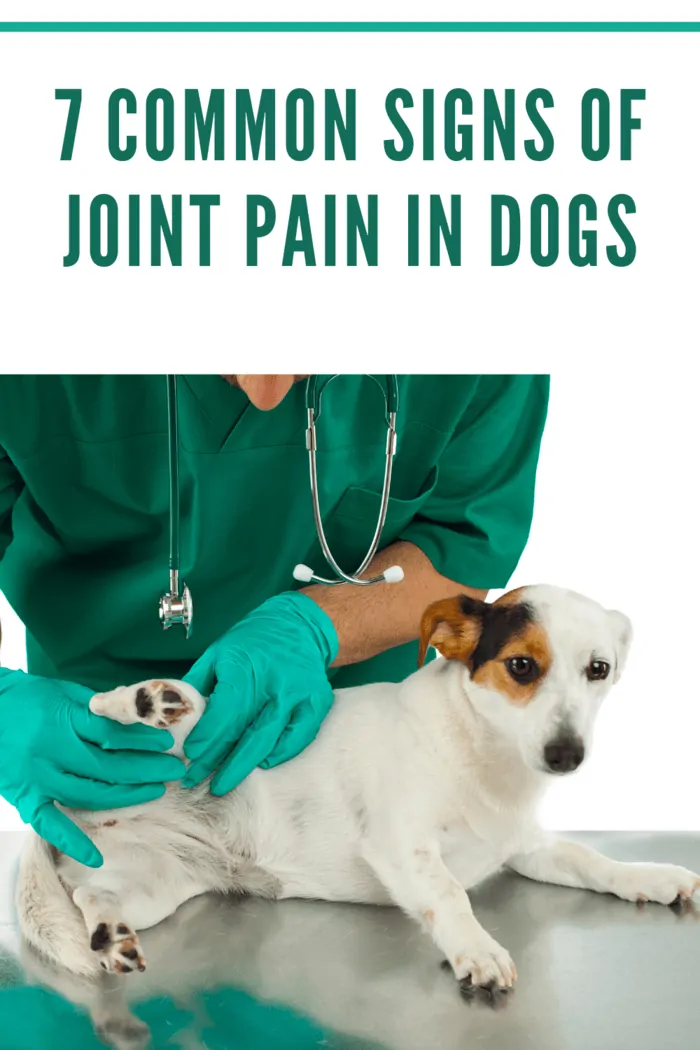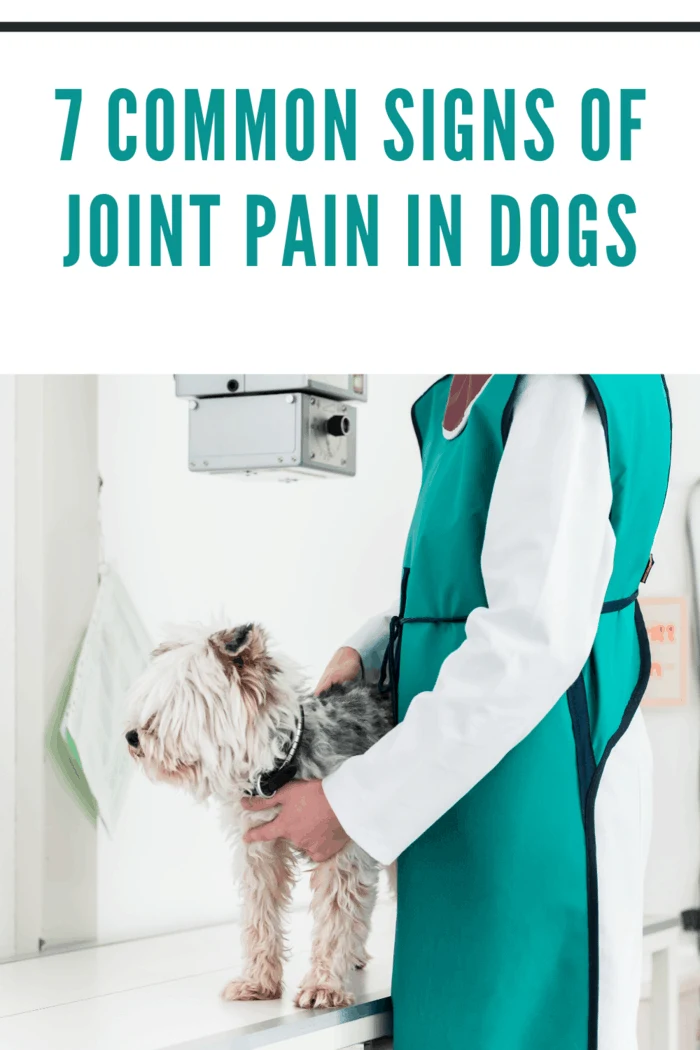There are several different signs of joint pain in dogs that you should know. You can learn more by checking out our guide here.
Recent research published in The Washington Post, found there are 77 million dogs in the U.S, proving we’re besotted with our furry friends.
Like with all pets, our dogs can suffer from short-term ailments like ear infections, vomiting, and tapeworms.
Joint pain in dogs is another issue so it’s important, as pet-owners, we understand how to spot it.
If you’re unsure of the symptoms, don’t fret.
Here are the top seven symptoms to look out for and ways to treat Fido.

What Causes Dog Joint Pain?
Before we dive into signs of pain in dogs, it’s important to understand the causes of dog joint pain say the experts at Our Fit Pets.
This ailment is caused by developmental or degenerative problems.
An example of the former is elbow and hip dysplasia which is often linked to the dog’s weight or breed.
Large dogs that carry a lot of weight are likely to develop joint pain and breeds like Rottweilers are prone to knee or ankle ailments.
Degenerative problems are issues that have slowly developed, often due to age, so consider this if your pet is getting older.
Top 7 Most Popular Symptoms
Dogs with joint pain show a variety of symptoms.
From behavioral changes to physical distress, if your pup shows any of the following then it’s time to visit the vet.
Consider these, for example:
Overall Slowing Down
One of the main symptoms of joint pain for dogs is when your pet slows down.
Old age is a factor but if they do this it’s because your pet is in discomfort when they’re moving around.
Note whether they are slow to rise, go up the stairs, and jump on the couch, especially if they often do this.
Limping
When dogs develop joint pain, their hip joints inflame which leads to stiffness or limping.
Limping is a protection mechanism as it shields the hip joint and minimizes the pain.
Check whether your dog is limping especially when s/he rises after a period of rest.
If it’s consistent, contact your vet as it may be joint pain or an array of other problems.
You may also notice your pet’s gait is stiffer than usual or they stiffen after getting up from a nap.
Again, this could be joint pain.
Sleepiness
According to Sleep.org, The average adult dog sleeps 12- to 14-hours a day so if yours is oversleeping, it’s a potential sign of joint pain.
Dogs suffering from joint pain spend most of the day resting or sleeping.
Your pet will be less reluctant to go on walkies and because exercise lessens, they may gain weight.
As a result, there’s more pressure on their joints, thereby increasing the problem.
If your pup behaves like this regularly, it’s time to seek help.
Loss of Appetite
Your dog, normally a big lover of dinner time, may experience appetite loss because they’re in pain.
Notice if your dog whines or cry whenever he moves as he’s trying to communicate his discomfort.
He may also bark less because it’s too exhausting.
Consider how little or how much your pup is vocalizing and whether it’s out of the ordinary.
Spinal Issues
Joint inflammation can harm your dog’s spine.
As a result, she may walk around hunched over and with an unnatural stance.
For instance, your dog may be in a closed hind leg stance when she’s standing.
Her back legs are closer together to shift some of her weight to the front so it’s more comfortable.
You may also notice a change in your dog’s run.
Many dogs suffering from joint inflammation press their hind legs together, known as “bunny hopping”, a clear sign your pup is suffering.
Muscle Atrophy
Because of the decreased activity, dogs will lose muscle mass as their joint health declines.
Run your hands over your pup’s body regularly, especially the leg muscles, to see whether they’re strong and symmetrical.
If not, it’s time to visit the vet.
Behavioral Changes
Joint pain will obviously dampen your dog’s mood and he may become irritable if you touch the affected area.
Your dog may also constantly lick his paw or nibble at his leg, drawing attention to the area hurting him.
Monitor how often he does this and if it’s frequently, it’s likely joint pain.
Treatment For Dog Joint Pain
Luckily, there are many ways to cure your dog’s joint pain.
Discuss the issue with a vet as every pup is different so don’t diagnose or treat your pet yourself.
These are the most popular joint pain treatments so if your dog suffers from joint pain, your vet may suggest:
Food and Supplements
There are certain supplements for dogs that improve joint pain.
For instance, fish oil decreases inflammation so your dog is no longer suffering.
Your vet may also prescribe medication like nonsteroidal anti-inflammatory drugs as they offer relief.
Weight Management and Exercise
If it’s related, help your dog return to a healthy weight so there’s less strain on the joints and they don’t become inflamed.
You can do this by decreasing their food intake, going for long walks, and swapping to premium kibble brands.
The vet may suggest physical therapy so your dog does safe, regular exercises to return her to health.
In the worst-case scenario, your pup may need surgery.
This may include injections, tissue or joint replacement, and thorough cleaning of the affected area.

That’s Everything About Joint Pain in Dogs
Now you know everything about joint pain in dogs, from the symptoms to the treatment.
Be mindful of your pet’s behavior, whether they’re refusing exercise, vocalizing more, or getting irritable.
If your dog continues to show these symptoms, call your vet immediately.
Good luck!
Did you find this article useful?
Then check out our other content on everything from Travel to Health and Wellness
